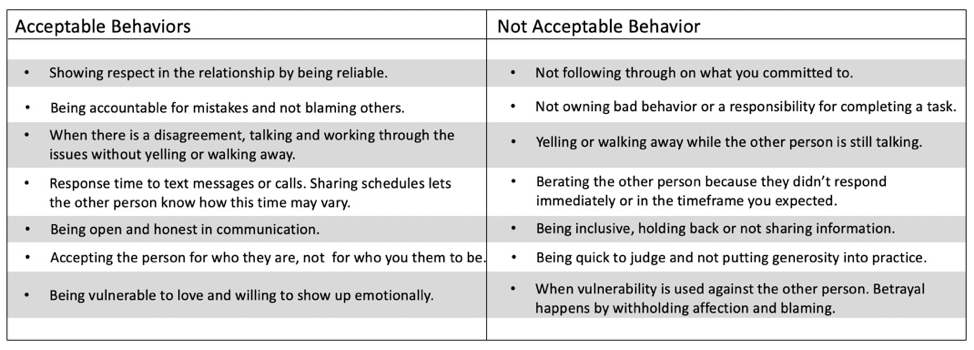Boundaries are lines of respect, rules, goals, limits and expectations you set within relationships. They are the personalized mappings that determine the direction and health of your relationships. It is only you who can place a limitation on specific behaviors that are deemed unpleasant, unwanted or unwarranted. If someone does something that is against your moral code, this is your playbook and you determine what is and what is not acceptable.
Understanding why boundaries are important.
Healthy boundaries protect our minds, emotions and bodies from being hurt, becoming angry and possibly resentful. It is up to you to own and control your experiences and not let others blame for their lack of respect. You teach others how to treat you and defining your boundaries is part of that process.
Once you understand why boundaries are important to have in your relationships, the next step is to determine how to put them in place where they are needed (self-awareness). Remember, both personal and professional relationships must have rules in order to be healthy and to show each other mutual respect, care and understanding (relationship management).
Establishing boundaries.
To begin your boundary-setting journey, know what you want, what you believe in and your values. Think clearly about how you want to be treated and those behaviors that you will and will not accept. Make two lists, label one list acceptable behaviors, the other list label not acceptable behaviors. (see sample below).

Reflect on how those behaviors make you feel, good, bad or indifferent. If the not acceptable behaviors push your buttons, know that you’re normal. This powerful feeling comes from a behavior crossing a personal core value of yours. Be sure to identify and label what value it is as it will be important to address this as we move forward in building an offense in how to deal with those boundary violators.
With the not acceptable list in mind, take one behavior and ask yourself, how do you want to be treated? The result will serve as a boundary that you place in your relationship moving forward. Here is an example, “When we are discussing heated topics, I will not tolerate being yelled at nor you walking away from me in mid-sentence.” It is up to you now to communicate this clearly. Always prepare for pushback. If you can predict it, you can prepare for it.
Managing boundaries.
It’s knowing what you want and effectively communicating it consistently by your words and actions. As you grow in your self-esteem and become more confident, you will learn that you can be assertive, calm, firm, and courteousas you politely challenge someone’s behavior if it makes you uncomfortable. If the person doesn’t adhere, you may need to communicate consequences to encourage compliance.
Below are a few tips which will help you create stronger boundaries and a thriving relationship:
- Speak from the heart. When establishing and enforcing boundaries with relationships that are already formed, you must be always be honest. The communication you engage in will help the other person(s) know you better.
- Tolerances. Everyone has their limits. Communicating what you will not tolerate needs to be clear: being yelled at, lied to, silenced, or inclusive – whatever it is, going past these boundaries is a going down a path they may not want to take.
- Responsibility for action. Setting boundaries and keeping them are vital. Your words and actions must match, otherwise, it will send the message that your rules can be compromised.
- Build Your Offense. He or she may also have boundaries or expectations of you that may cause discontent. Prepare for it. If the person reacts, accept that reaction, validate the emotion and discuss how you can move forward with the set boundary.
- Show Respect. If you’re in a relationship with someone who has specific boundaries, always respect them and don’t push your own boundaries on them. This is a great opportunity to share boundaries with those around you. This mutual respect can only strengthen your close relationships.
- Expect Pushback. Setting new boundaries drive constant change in a relationship. With change comes uncertainty and fear. Discuss the challenges and opportunities that come with the change and dispel the fear that may be present.
- Temperature Check. From time to time and especially if something just doesn’t feel right in the relationship, you should check in with the other person and share wholeheartedly how you are feeling about the relationship. Operating on transparency is a necessity to building the trust in every relationship.
Setting boundaries is about standing up for what you believe in and living your values. They empower us and give us courage to own and control your experiences. Establishing boundaries cultivates trust.
Daring to set boundaries is about having the courage to love ourselves even when we risk disappointing others. – Brené Brown



